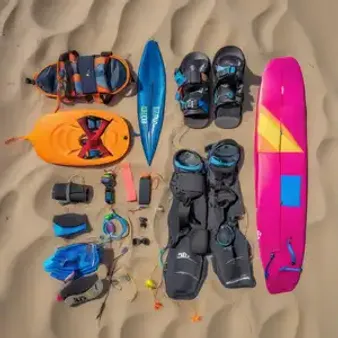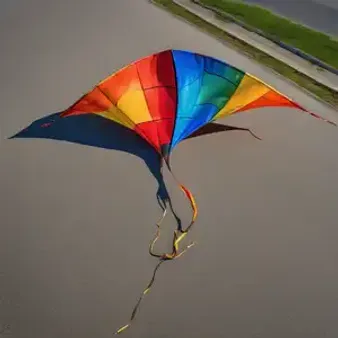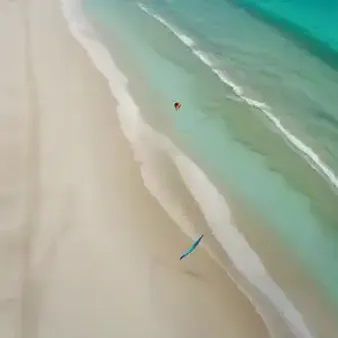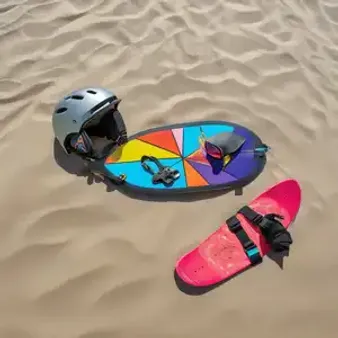Table of Contents
kite skate, an exhilarating blend of kitesurfing and skateboarding, offers an adrenaline-pumping experience for thrill-seekers. At kizworld, we're passionate about providing you with the ultimate guide to kite skate, ensuring you have all the information you need to embark on this exciting journey. Whether you're a seasoned kitesurfer or a skateboarding enthusiast looking for a new challenge, this comprehensive guide will equip you with the knowledge and skills to master the art of kite skate.
Category | Details |
|---|---|
Kite | Choose a kite size appropriate for your weight and wind conditions. Larger kites provide more power, while smaller kites offer greater maneuverability. |
Board | Opt for a sturdy and durable board designed for kite skate. Consider factors like size, shape, and deck material to suit your riding style. |
Safety Gear | Prioritize safety by wearing a helmet, wrist guards, and knee pads. Consider additional protective gear like impact shorts or a buoyancy aid for added protection. |
Techniques | Master basic kite control techniques like launching, landing, and steering. Learn to harness the wind's power for propulsion and maneuvering. |
Locations | Seek out open areas with smooth surfaces, consistent wind conditions, and minimal obstacles. Beaches, parks, and paved roads can be suitable locations. |
Kite Skate Gear Essentials
So, you're interested in kite skate? Awesome! It's like skateboarding, but with a kite pulling you along - talk about a rush! First things first, you'll need the right gear. Think of it like suiting up for a superhero mission - you need the right tools for the job! You'll need a kite, obviously, and the size depends on your weight and the wind conditions. Then you've got your board; gotta make sure it's sturdy and made for kite skate, not just any old surf skateboard. Safety first, so grab a helmet, wrist guards, and knee pads, just like when you're learning how to get started with skateboarding! Trust me, you'll thank me later!
Kite Skate Gear Essentials
Mastering Kite Skateboarding Techniques
Alright, so you've got your kite skate gear ready - awesome! Now comes the fun part - mastering the techniques. Remember that how to get started with skateboarding is essential if you want to engage in this sport. It's a bit like learning to dance with the wind. You wouldn't jump into a ballet recital without practicing your pirouettes, right?
First up, you gotta get comfy controlling your kite. Imagine it's an extension of your arm. You want to be able to launch it smoothly, land it gently, and steer it like a pro. Think of it like learning to ride a bike - a bit wobbly at first, but you'll get the hang of it. Practice makes perfect, my friend!
Harnessing the Wind
Once you've got the kite control down, it's time to harness that wind power. This is where the real magic happens! The wind becomes your engine, pulling you across the surface. It's like having a superpower - you can accelerate, cruise, and even carve turns using the wind's energy.
It might feel a bit intimidating at first, but trust me, it's exhilarating! It's like surfing, but with an extra boost. As you get more comfortable, you can even try some cool tricks. Imagine yourself gliding across the pavement, the wind whipping through your hair - pure freedom!
Action | Tips |
|---|---|
Launching | Find a clear area with steady wind. Start with the kite on the ground and gently pull on the control bar to lift it into the air. |
Landing | Steer the kite towards the edge of the wind window (where the wind is weaker). Gently guide it down, ensuring a smooth landing. |
Steering | Use the control bar to steer the kite. Pulling the bar in one direction moves the kite in that direction. Practice smooth and controlled movements. |
Mastering Kite Skateboarding Techniques
Finding the Perfect Kite Skate Spot
Smooth Sailing
Okay, so you've got your gear and you're feeling confident with your kite skills. Now you need to find the perfect spot to show off your moves! Think wide open spaces, with a nice smooth surface. You don't want to be dodging trees or tripping over rocks while you're trying to learn how to do a manual ! Beaches are often a great choice, especially when the tide is out, leaving a firm, flat expanse of sand. Paved areas like parking lots or empty tennis courts can also work well. Just make sure there's nothing to get tangled up in your kite lines.
Windy Wonderland
Of course, you can't kite skate without wind, right? That'd be like trying to sail a boat on a still pond! You want a spot with consistent wind conditions, ideally blowing parallel to the surface you'll be riding on. Think of it like a gentle but steady push from behind, propelling you forward. It's best to avoid areas with gusty or unpredictable winds, especially when you're just starting out. Too much wind can make things tricky, even dangerous! It's a bit like trying to balance on a skateboard while someone's shaking it back and forth! And remember, safety first - always check the weather forecast before you head out.
- Beaches (with firm, flat sand)
- Paved areas (parking lots, empty tennis courts)
- Open fields (with smooth surfaces)
Finding the Perfect Kite Skate Spot
Kite Skate Safety and Precautions
Kite skate is a blast, but safety always comes first! It's like learning how to get started with skateboarding - you wouldn't hit the skatepark without your helmet, right? Same goes for kite skate! Always wear a helmet, wrist guards, and knee pads. You might even consider impact shorts or a buoyancy aid for extra protection. Think of it like wearing armor - it's better to have it and not need it than need it and not have it!
Kite Skate Safety and Precautions
Final Thought
Kite skate offers a unique and exhilarating way to experience the thrill of kitesurfing and skateboarding combined. By understanding the essential gear, mastering fundamental techniques, prioritizing safety, and discovering ideal spots, you can confidently embark on your kite skate journey. Embrace the wind, harness its power, and glide through your surroundings with the freedom and excitement that kite skate provides.